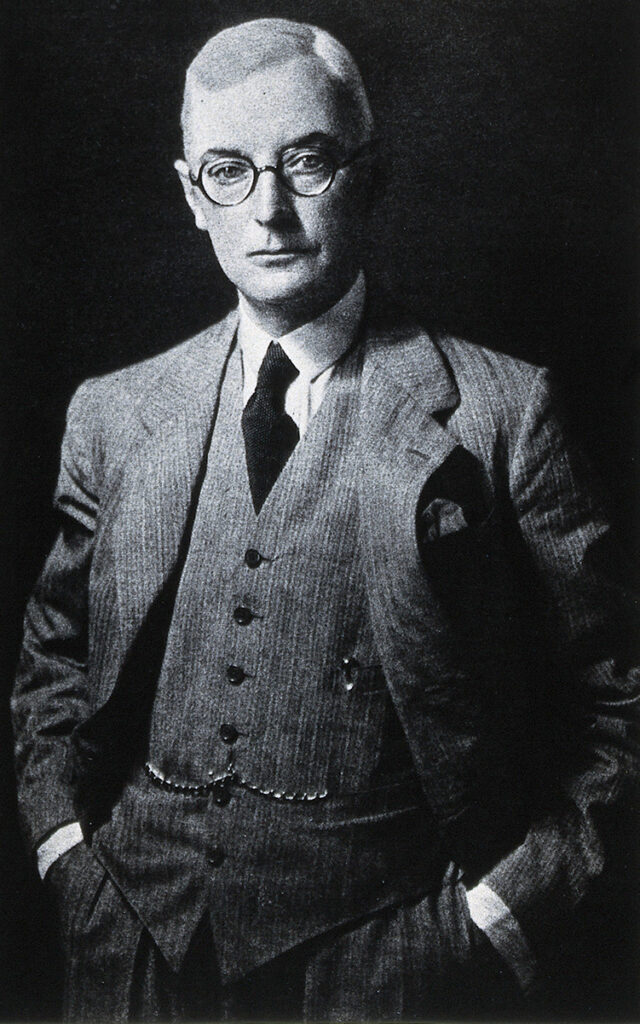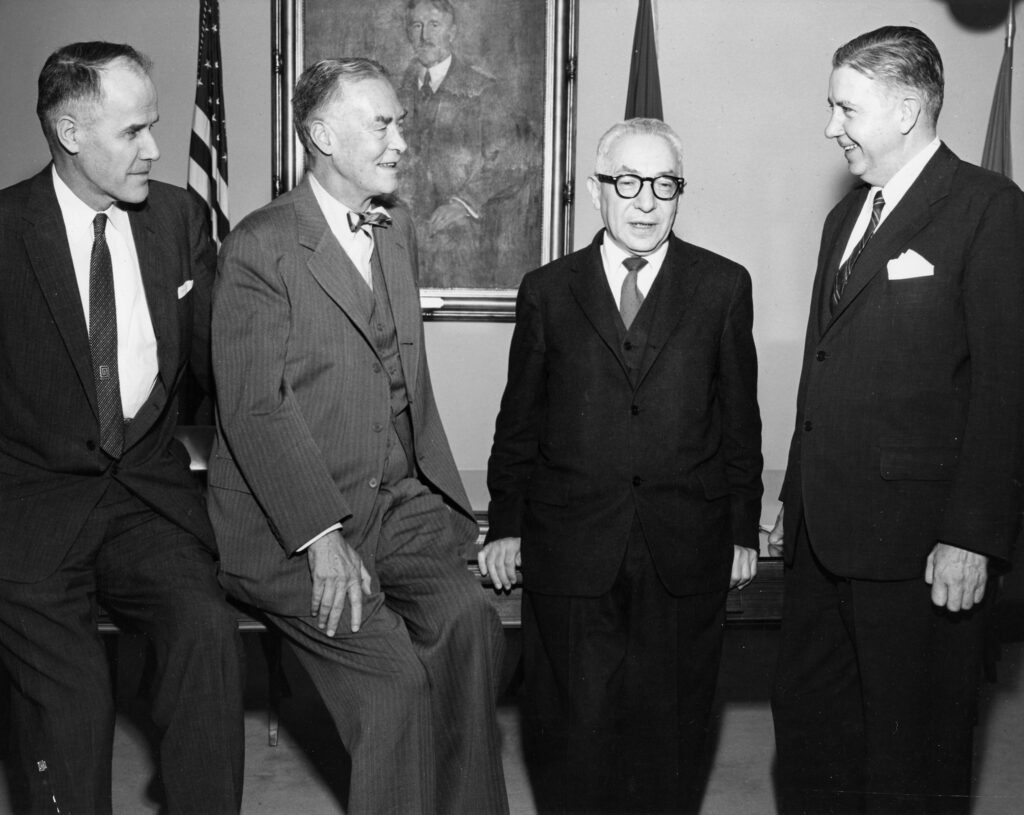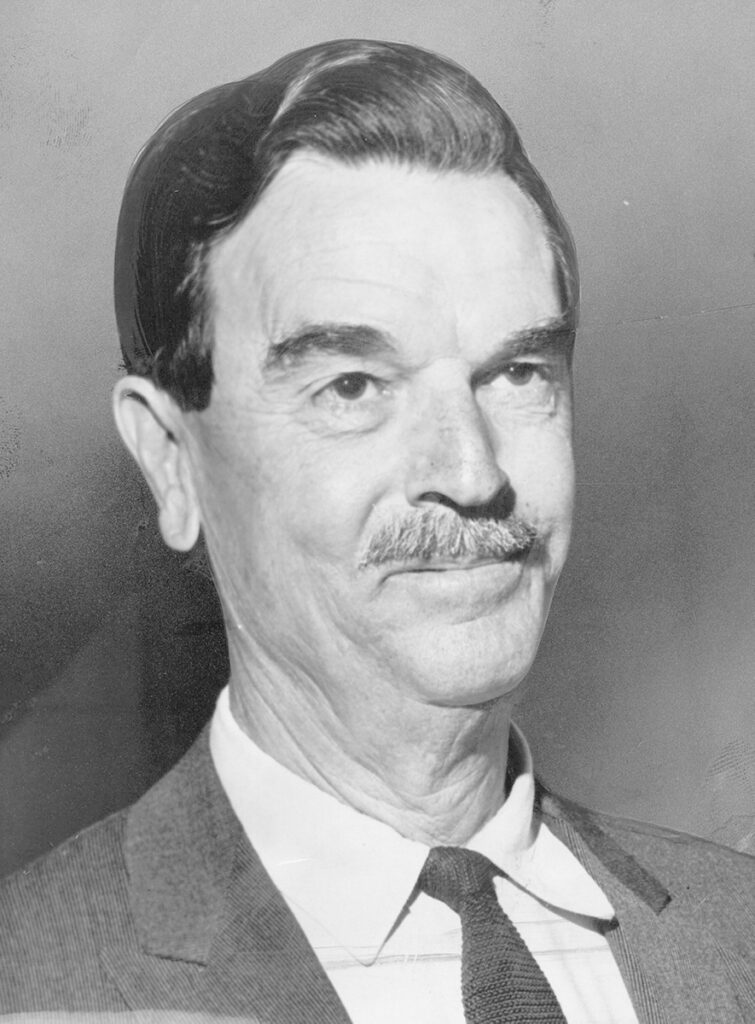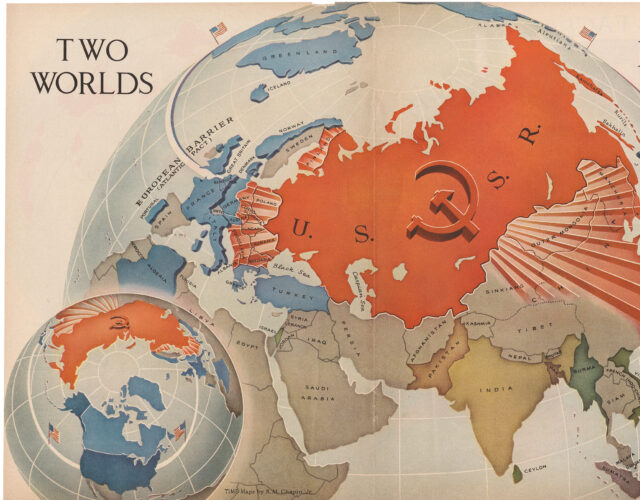In April 1954 Jeffries Wyman, the U.S. science attaché to Paris, was in Rome on a working vacation. His job included getting to know local scientists and their work, representing the United States at informal gatherings and conferences, and generally greasing the wheels of international science. At his previous stops in Milan, Padua, and Florence, Wyman had dined with colleagues, visited their labs, and taken in the sights.
Wyman, a molecular biologist, spent the morning of April 20 at the Istituto Superiore di Sanità. His hosts showed off their centrifuges and complained about the difficulty of securing visas to the United States. Wyman spent the afternoon admiring Caravaggios at the Galleria Borghese before meandering back to his hotel via the Trevi Fountain and the Pantheon. On his return he found an urgent message from the American embassy. A security officer informed him that a Mr. Winter from the legal attaché’s office would be flying in that evening. Wyman should expect a visit around midnight.
What was all this about? The security officer, a Mr. Brown, couldn’t say.
At half-past midnight Brown arrived at Wyman’s hotel. Winter had missed his plane, but Brown told Wyman he should report to the embassy the next day. When Wyman arrived for the meeting, he wasn’t prepared for Brown and Winter to flash FBI badges. The two men wanted to know why Wyman had met with both J. Robert Oppenheimer and suspected Soviet informer Haakon Chevalier in Paris the previous month. Wyman explained the obvious: as the science attaché he welcomed any visiting U.S. scientists and pumped them for their local contacts. Wyman was cleared of any wrongdoing, but the experience rattled him. “I felt for a moment like a criminal,” he noted in his administrative diary.
When the CIA was formed in 1947, gathering of scientific intelligence naturally fell under its purview. But the agency largely failed in its first halting attempts at scientific sleuthing, and the U.S. government embraced a new approach: beginning in 1950 the State Department would glean what information it could from American scientists traveling abroad and from a newly created science attaché program. A handful of scientific diplomats such as Wyman would take on two-year appointments in European capitals, but the bulk of the information would be collected catch-as-catch-can from civilian scientists during the course of their travels. Scientists, ever curious and eager to share their latest findings with colleagues, offered a natural vehicle for collecting intelligence from both allies and enemies. Yet the rising tide of anti-Communism put any American who interacted with former, current, or suspected Communists in legal jeopardy. The United States simultaneously needed its scientists to talk to Communists and forbade them from doing so.

Wyman’s encounter with the FBI epitomized the central conflict in using scientific internationalism for national gain early in the Cold War. Science attachés had an essential, and essentially unresolvable, role to play in the United States’ ideological conflict with the Soviet Union. Leaders in the two countries saw the conflict as all encompassing. Both countries invested significant resources in propaganda and psychological warfare operations designed to highlight the benefits of their respective economic and political systems. From the Marshall Plan, to Voice of America broadcasts, to the anti-Communist pamphlets carried by tens of thousands of balloons dropped on China, psychological warfare strategists experimented with ways to extend U.S. influence around the globe. Science played a role in these campaigns for the simple reason that science and technology were part of an American way of life they hoped to promote. Science in the West was free, the American message went, and a national system built on scientific freedom offered a better future than one built on Communism. At the same time, the military standoff between the United States and the Soviet Union involved classified, high-tech weapons systems developed from cutting-edge scientific research. How could science be simultaneously free and secret?
Whether in lavish academic conferences covertly sponsored by the CIA or high school textbooks promoted with help from the U.S. Agency for International Development, U.S. propaganda typically defined American science as the opposite of Communist science, which, the Americans said, forced its practitioners to adhere to party dogma, favored political loyalties, prioritized practical achievements and technological spectacle over basic science, and advanced nationalistic goals. In response the United States promoted a vision of science that highlighted empiricism, objectivity, internationalism, and a commitment to pure research. The engines of U.S. propaganda circulated a vision of science, American-style, that highlighted scientists’ independence from outside interference or government control. Science in this view was apolitical.
And yet these claims were always aspirational. Both the United States and the Soviet Union desperately wanted insights that could give them the upper hand in their military contest. U.S. propaganda might tout the establishment of the National Science Foundation as a monument to basic, apolitical science, but it was money from U.S. defense agencies that fertilized the growth of technologically oriented fields at politically connected universities. The United States, like the Soviet Union, especially valued technological achievements that could further its national goals. Sending the country’s leading scientists out as emissaries of scientific freedom simultaneously promoted this chimeric vision and established the apparatus used to collect the scientific intelligence on which national supremacy depended.
The two methods used to advance U.S. foreign policy—propaganda and intelligence collection—were joined through the concept of “scientific internationalism.” At its heart was the idea that science knows no borders. A laudable goal, yes—but not a utopian one, not in 1950 and not now. The logic of this approach seems obvious. Of course the best way for a powerful nation to gather scientific intelligence is by providing opportunities for its scientists to meet and mingle with scientists from target countries.
In the late 1940s and throughout the 1950s, chemists dominated the ranks of science attachés and scientific intelligence officers. The CIA’s first science head, Wallace Brode, and the State Department’s first science adviser, Joseph Koepfli, were both chemists, and these two recruited yet more chemists to staff their offices. It was no secret the United States hoped to promote its own national interests through scientific internationalism. The trade journal Chemical and Engineering News (C&EN) reported on the United States’ nascent efforts to set up a system for gathering scientific intelligence, with regular updates on science attachés’ appointments and the government’s need for scientific intelligence.

Why then have historians of science, myself included, previously struggled to see the links between scientific freedom and scientific intelligence gathering? In part, this is a story of secrets hiding in plain sight. Media outlets, such as C&EN, covered the science attachés as if they were simply diplomats—albeit diplomats who happened to spend a lot of time in the company of intelligence officers. Other ties were more actively hidden. The Asia Foundation, for instance, was a supposedly private foundation funded and controlled by the CIA from its founding in 1951 (originally as the Committee on Free Asia) until 1967. (It still exists today as a mostly State Department–funded NGO focusing on development and democracy work in East Asia.) Curious readers can catch up on the foundation’s origins through documents available at the CIA’s Freedom of Information Act website.
Koepfli found himself at the center of his own political firestorm when he criticized the anti-Communist McCarran Act. Officially known as the Internal Security Act of 1950, the McCarran Act established the legal basis for the most egregious violations of civil rights associated with McCarthyism. The act authorized the FBI to investigate persons suspected of subversive behavior, required members of the Communist Party to register with the government, and barred entry visas for members of the Communist Party and any foreign national who might “engage in activities which would be prejudicial to the public interest” of the United States. The McCarran Act had an immediate and chilling effect on scientific exchange, by some estimates blocking the entry of half of the foreign scientists who sought to come into the country.
Within a matter of weeks Koepfli’s Foggy Bottom office became the frontline of the visa battle. Clearing a single scientist required more than a hundred hours of staff time; Koepfli’s full-time staff of seven could not possibly keep up. One of these staff members, Rhodes scholar and former navy test pilot Neil Carothers, did nothing but work on the visas. In response Koepfli successfully lobbied higher-ups at the State Department to make scientists eligible for so-called Proviso 9 visas—named after a provision in the Immigration Act of 1917 that allowed the attorney general to issue temporary visas to otherwise inadmissible aliens.

Koepfli’s use of Proviso 9 exceptions to bring scientists with Communist affiliations into the United States earned him enemies across Washington, both in and beyond the State Department. In December 1953, as part of a multiweek attack on supposed Communist influence over the State Department, U.S. News and World Report quoted an unnamed Republican official who described the Office of the Science Advisor as a “stink hole of out-and-out Communists.” The newsmagazine printed a retraction when Koepfli’s lawyers threatened a million-dollar lawsuit, but the office never recovered from the attacks. Koepfli resigned shortly thereafter to return to his former position at Caltech. With a new Republican president and Republicans in charge of both houses of Congress, the State Department slashed the Science Office’s already lean budget, and the science attaché program withered. Apparently scientific intelligence wasn’t worth the cost of consorting with Communists.
As a vehicle for gathering scientific intelligence, the State Department’s science attaché program failed spectacularly. So, too, did the CIA’s attempts to gather actionable scientific intelligence by debriefing civilian scientists after their travels abroad. Where these programs showed more promise was in building relationships with potentially sympathetic foreign scientists. From the vantage point of 1983 Koepfli described the goal of the State Department’s science program as getting “good European scientists into this country [to] keep them from going over the Iron Curtain and becoming communist.” This sort of cultural diplomacy was not, in fact, the original point of the Science Office, but Koepfli’s retrospective account makes sense given how the United States used its science diplomats following the launch of the world’s first satellite.
The October 1957 launch of Sputnik 1 forced American policy makers to fully embrace the potential for scientific freedom to be used as an ideological weapon. As one advisory document put it in 1960, the “objective nature of science,” its “independence from political beliefs,” made science the perfect olive branch to extend to both Communist-bloc scientists and ambitious leaders in newly independent countries.
This heady dream of a scientific internationalism free from politics drove U.S. cultural diplomacy for most of the rest of the 1960s. It lives on today in renewed calls for science diplomacy and pleas to “keep politics out of science.”
This essay is adapted from the author’s book Freedom’s Laboratory: The Cold War Struggle for the Soul of Science.




